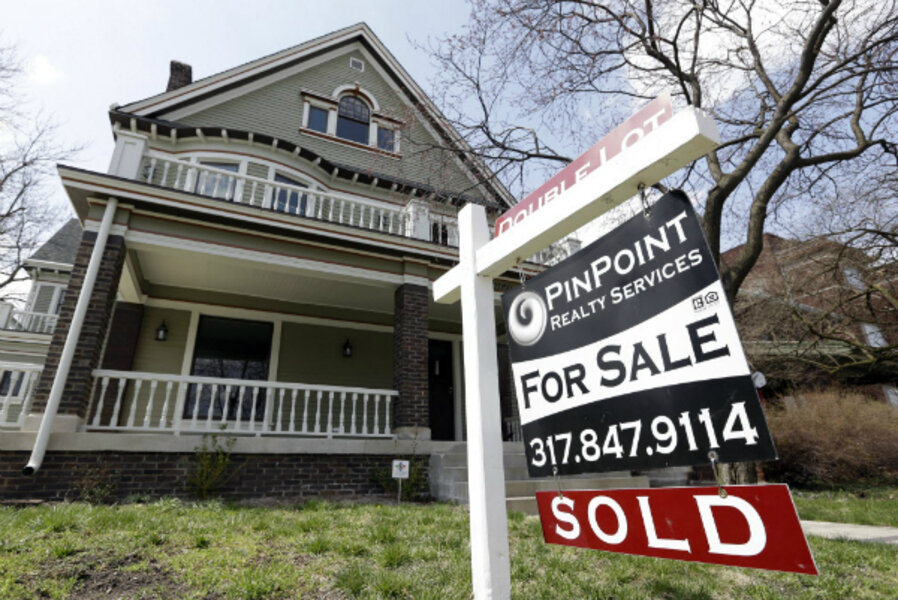US home prices rise again: why this housing recovery has legs
Home prices rose in April at their fastest pace since the housing bust, adding to evidence of a recovery and upward momentum in the long-troubled US real estate market.
Average home prices rose 12.1 percent in the 12 months that ended in April, according to Standard & Poor’s Case-Shiller index of sales activity in 20 major US cities. That’s a stunning rise of essentially 1 percent per month.
In April alone, the index logged a 2.5 percent gain in home values compared with March, the fastest gain in more than six years of tracking.
Not all cities have seen equal gains.
Big gainers over the past year have been hard-hit markets that are getting back on their feet: Atlanta, Detroit, Las Vegas, Los Angeles, Phoenix, and San Francisco all posted price gains between 19 and 24 percent.
In the case of San Francisco, “back on its feet” means the market is back to the Redwood-high home values for which the Bay Area is known.
For Detroit, by contrast, the increases still leave market in the midst of a long struggle to stabilize its home values, as the city struggles to revive its economy and finances.
Many other cities have notched 12-month price gains in the 7 to 11 percent range: Boston, Chicago, Dallas, Denver, Seattle, Tampa, and Washington. The New York City area posted more tepid 3 percent price growth.
“Home prices are going up nearly everywhere because of shortages,” economists Patrick Newport and Stephanie Karol of the forecasting firm IHS Global Insight said in an analysis of the numbers. “Construction of single-family homes has been depressed since late 2007 in nearly every state. Meanwhile, the US population has increased by more than 12.0 million since the end of 2007.”
Although rising prices make it harder for prospective buyers to afford homes, economists generally view the signs of a housing market recovery as positive for the economy.
It’s a sign of growing economic confidence, improvement in family finances, and an impetus for the long-moribund construction industry.
In a separate economic report Tuesday, a widely watched gauge of US consumer confidence, tracked by the Conference Board in New York, rose to a 5-1/2 year high.
This doesn’t mean all is “back to normal” in the US or world economies. Unemployment rates remain high. Many middle-income families have been seeing little or no growth in real incomes, after inflation. And around the world, economies are still leaning heavily on the support of stimulus provided by central banks.
Recent turmoil in global stock markets, for example, partly reflects worry that the US Federal Reserve is eyeing an exit from supportive policies that have kept interest rates low.
Those low interest rates have been helping the housing market – keeping mortgages attractive and allowing consumers to buy homes at higher prices than they could otherwise afford.
An uptick in mortgage interest rates, expected by many forecasters, would create a head-wind for the housing recovery. But as long as the economy is growing and new jobs are bringing the unemployment rate down, many economists expect real estate markets to remain on the mend.
News of “shortages” of homes for sale in popular markets, pushing home values up, should prompt the planting of more for-sale signs by people who have been waiting for the right time to sell.
In the view of Mr. Newport and Ms. Karol, that won’t fully meet the rising demand, so new construction will also need to ramp up – a process that will take some time.
The housing recovery is also being fueled by a decline in distressed properties for sale.
May marked the 13th straight month of decline in the number of US homes in foreclosure, according to data released Tuesday by LPS Applied Analytics. Some 3 percent of mortgages are in foreclosure, the firm said.







